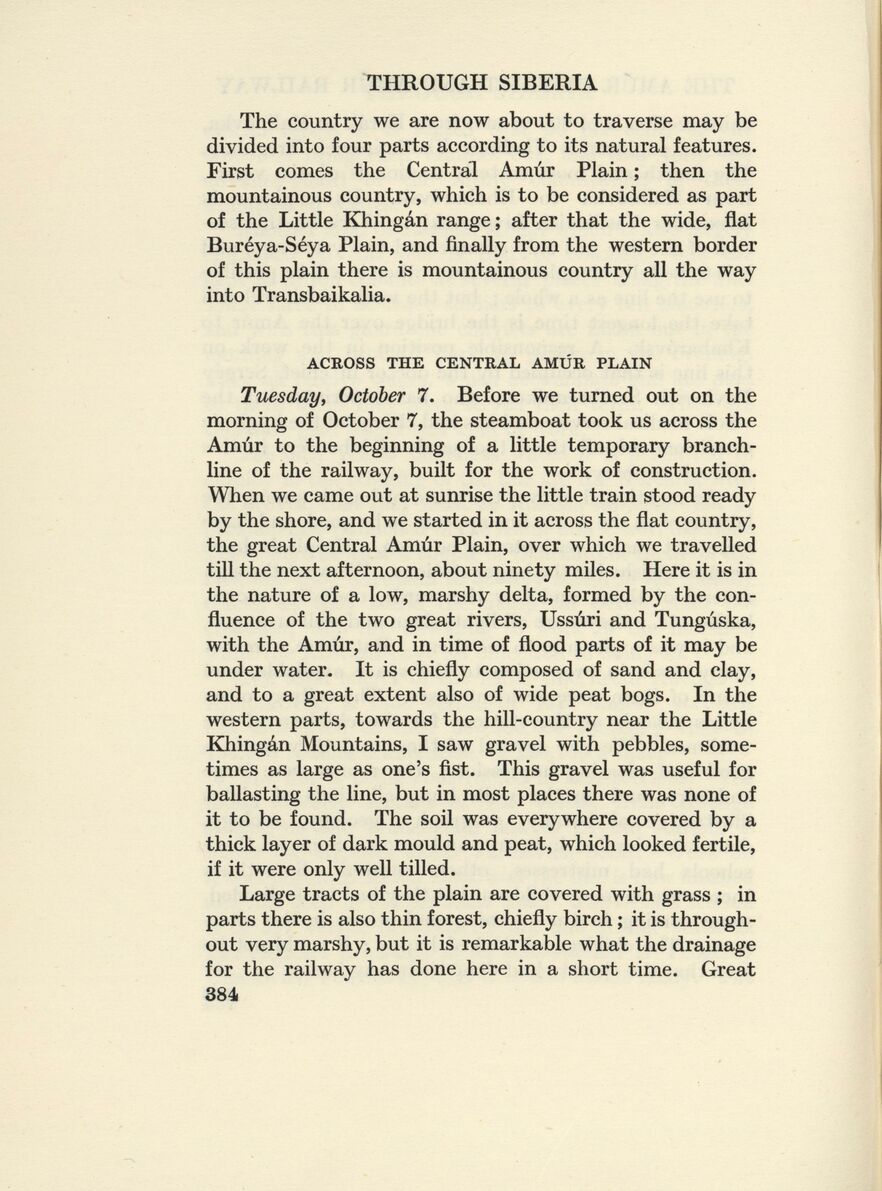
Full resolution (JPEG) - On this page / på denna sida - XVII. The Amúr district and the Amúr railway

<< prev. page << föreg. sida << >> nästa sida >> next page >>
Below is the raw OCR text
from the above scanned image.
Do you see an error? Proofread the page now!
Här nedan syns maskintolkade texten från faksimilbilden ovan.
Ser du något fel? Korrekturläs sidan nu!
This page has never been proofread. / Denna sida har aldrig korrekturlästs.
THROUGH SIBERIA
The country we are now about to traverse may be
divided into four parts according to its natural features.
First comes the Central Amiir Plain ; then the
mountainous country, which is to be considered as part
of the Little Khingån range ; after that the wide, flat
Buréya-Séya Plain, and finally from the western border
of this plain there is mountainous country all the way
into Transbaikalia.
ACROSS THE CENTRAL AMUR PLAIN
Tuesday, October 7. Before we turned out on the
morning of October 7, the steamboat took us across the
Amiir to the beginning of a little temporary branch
line of the railway, built for the work of construction.
When we came out at sunrise the little train stood ready
by the shore, and we started in it across the flat country,
the great Central Amiir Plain, over which we travelled
till the next afternoon, about ninety miles. Here it is in
the nature of a low, marshy delta, formed by the con
fluence of the two great rivers, Ussiiri and Tunguska,
with the Amiir, and in time of flood parts of it may be
under water. It is chiefly composed of sand and clay,
and to a great extent also of wide peat bogs. In the
western parts, towards the hill-country near the Little
Khingån Mountains, I saw gravel with pebbles, some
times as large as one’s fist. This gravel was useful for
ballasting the line, but in most places there was none of
it to be found. The soil was everywhere covered by a
thick layer of dark mould and peat, which looked fertile,
if it were only well tilled.
Large tracts of the plain are covered with grass ; in
parts there is also thin forest, chiefly birch ; it is through
out very marshy, but it is remarkable what the drainage
for the railway has done here in a short time. Great
384
<< prev. page << föreg. sida << >> nästa sida >> next page >>